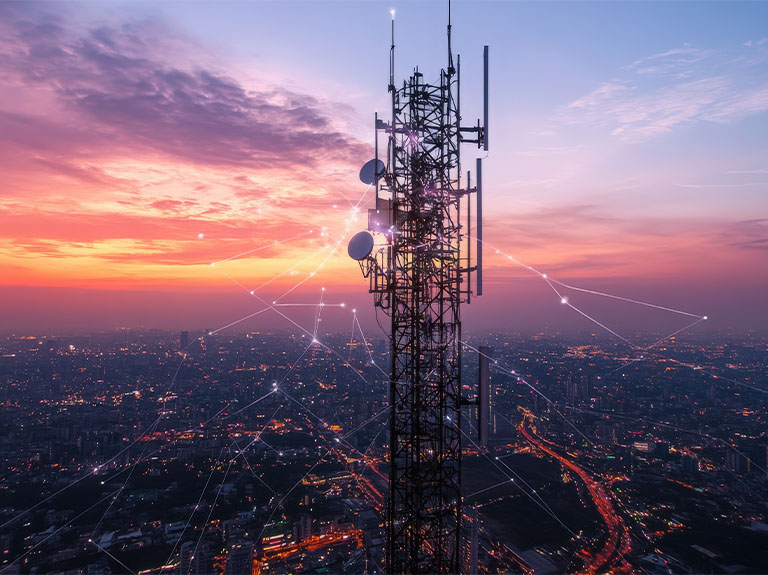Welcome to 2020 – the year we pull back the curtain on 5G for consumers, with new devices, new apps and new capabilities. As we take our first steps into this new decade, tens of millions of our customers have a new way to ring in the New Year: 5G.
Since first launching 5G service and devices for businesses over a year ago, and for consumers last month, we now offer two flavors of 5G service across the country, including:
- 5G+ in parts of 35 cities, including in parts of Baltimore, Cleveland, Detroit, Menlo Park, Calif., Miami, Miami Gardens, Fla., Ocean City, Md., Oakland, Calif., Philadelphia, Phoenix, Redwood City, Calif., San Bruno, Calif., which lit up last month. Turning on service in these areas exceeded our goal of reaching parts of 29 cities with 5G+ in 2019. 5G+ service is provided over high band spectrum and offers extra speed and capacity to serve high-traffic areas such as arenas and campuses.
- 5G in 19 markets, including additional December expansions into Baltimore, Birmingham, Ala., Bridgeport, Conn., Buffalo, Detroit, Las Vegas, Louisville, Ky., New York City , Philadelphia and Washington D.C. 5G service is provided over low band spectrum and offers broader coverage. We expect to offer AT&T 5G service to consumers nationwide in the first half of 2020.
And now is when things will truly get going, and here’s why.
We’ve spent the past several years laying the groundwork so that our customers won’t merely have access to 5G, but will have great 5G experiences. Because it’s not just about faster speeds – it’s about changing the ways we interact with each other, the ways we integrate innovations into our lives, maybe even changing how we commute to work. And for 5G to reach its full potential, we couldn’t stop at deploying new equipment and spectrum on our towers. We had to also redesign our network foundation.
Here’s what we were up to in 2019 to help meet our 2020 5G goals:
- Increasing network responsiveness: 5G is not only about how fast phones can transfer data, but also about how quickly they can process and respond to data, called “lag time” or “latency.” To provide lower latency, we are deploying our data centers closer to the customer than ever before. This is our Network Cloud. With less distance to travel, data moves faster, which decreases the time it takes for a click on your computer or smartphone to respond.
- Expanding the amount of data we can push through our network pipelines. At the end of November, we activated our first 400-gigabit optical connection between Dallas and Atlanta, carrying live internet traffic across our network for our customers. Simply put, the pipeline that already carries large amounts of data for our broadband customers is expanding even more. Over a 400 Gbps connection, you could download all 70 episodes of Game of Thrones in high definition in less than 8 seconds. We were first to reach this 400 Gbps milestone, and will begin deploying the technology across our network in 2020. Because we’ve been extensively planning for this, a large portion of the optical network equipment we’ve installed can be upgraded to 400 Gbps with a simple software update, making for a seamless transition.
- Creating smart ways to control the network with software: In 2013, long before 5G was ever tested in Labs, we recognized the value of using software to control our network, and began designing and deploying our software-defined network (SDN) and network function virtualization (NFV) capabilities. Much like consumers have replaced standalone cameras, clocks and music players with apps on our phones, AT&T is using SDN and NFV to essentially replace network hardware equipment with apps running on servers. It’s faster and allows us to boost network capacity to meet surging data demands in real-time. We are on track to control 75% of our core network functions with software by the end of 2020, and we’re nearly there. Today, 100% of the data traffic that runs through the infrastructure connecting the elements of our core network together is backed by SDN.
- Increasing the speed at which we can deploy and innovate. Our teams developed new ways to control the way our radio network connects to smartphones through what we call our 5G RAN Intelligent Controller (RIC). In April, we described how The Linux Foundation and the O-RAN Alliance had come together for a new approach to how radio network software and hardware are designed and built. Developing with this approach speeds innovation, helps us control costs and gives us more flexibility to help ensure consumers have great 5G coverage.
- Contributing to the development of 5G standards. We are one of the top contributors to 3GPP, the organization that oversees standards development for 5G. From our 5G Labs and AT&T Foundry locations across the globe, our teams are making contributions that are benefitting many, industrywide. For instance, we were among the first to present and champion the concept that many today refer to as Dynamic Spectrum Sharing (DSS). It’s an extremely important technology that will enable carriers to share spectrum between 4G and 5G – basically turning up 5G without turning off LTE.
Many of these benefits can be experienced on our first 5G devices. With a compatible plan and in a coverage area, business customers can access 5G+ using the Samsung Galaxy S10 5G and the NETGEAR Nighthawk 5G Hotspot Router and both consumers and business customers can access 5G with the Samsung Galaxy Note 10+ 5G.
What does all this mean for you? These milestones have brought 5G out of our imaginations and into reality. This new technology has the capability to change our world and we’re excited to continue working in 2020 to further enable the possibilities of a 5G future.
So, to all our customers who are on this journey with us: buckle up. You’re in for an exhilarating ride on the AT&T 5G network in 2020 and beyond. Here’s to 5G in 2020 and the infinite possibilities ahead.


